You might have heard it already…
Referral traffic from social media has surpassed that from search.
But still, for businesses, search engines remain precious online real estate.
Why?
- The above Parse.ly report accounted for news websites.
- Leads from search engine traffic are higher quality and convert better.
- Organic search is a stable and repeated source of traffic, every month, once you reach the top.
Now, organic FREE traffic is available for all types of businesses and most digital marketing consultants drool over it.
It isn’t possible, though, to get a guaranteed berth in the top search spot. As I’ve stated many times, the coveted first spot gets about 30% of clicks.
But, if you aren’t in the first 5 spots, you’re essentially invisible.
I am sure you know another definitive way to get a top spot in search.
Invest in a PPC campaign and get consistent clicks/traffic as you spend dollars.
There’s a huge benefit with Google Ads:
For commercial keywords (yes, those revenue-driving ninjas!), ⅔ of clicks go to sponsored results.
Further, Google has already started expanding their text ads and adding more shopping units. They occupy prominently visible above-the-fold locations and undertake a surefire way to get tremendous brand exposure.
It’s only logical to embrace the change and interact with your audience through a multi-channel strategy that integrates a PPC campaign with an SEO campaign. It’s a great maneuver to gain visibility and authority, in the eyes of your customers. And, you simultaneously reduce your customer cost per acquisition.
So, are you interested in creating an integrated and informed multi-channel strategy?
Then, let’s start exploring how search engine optimizatoin and PPC can work together to amplify your online marketing campaigns and boost your conversion rate.
Bid for branded keywords to complement your organic listings
Sure, you’ll rank organically at the top spot for your brand’s keyword.
But, as silly as it might sound, you also need to advertise and bid for your brand keywords and related keywords to drive search engine rankings.
You earn more real estate above-the-fold. In a 2012 study, Search Engine Land reported that 50% of clicks that advertisers get on their ads aren’t replaced by organic search results (when the ads don’t appear).
I’ve mentioned previously that bidding for keywords -a great marketing strategy overall – will also help in increasing the quality score of your AdWords account and bolster your conversion rate.
Let’s explore the keyword searches for some branded keywords.
I get a decent search volume for my brand keywords (from people who already know about me).
And, even the suggested bid for my brand keyword is low.
Similarly, Marie Forleo gets a good number of monthly searches for an array of brand keywords. Some of these keywords, like “marie forleo bschool,” show commercial intent – so she can even offer her flagship course directly to these people.
Here’s an example of Barneys bidding for its brand keyword. Thereby, it’s occupying 12 results, above-the-fold.
Larry Kim recommends setting aside at least 15% of your budget for your brand keywords.
Don’t let your competitors poach their way into PPC ads for your brand keywords. Bid low and, even then, you’ll drive targeted traffic to your website.
Leverage internal search function data for improving both SEO and PPC
If there are a huge number of visits using your site’s search function (depending on your type of website, this number will vary), then you need to fix your navigation in order to improve your SEO strategy and PPC campaign.
But, the site search data is a goldmine to find the EXACT phrases that people use to find your products. They will most likely also use the same language on search engines.
You can filter those high-converting keywords from the chaff, using this data. Once you find relevant keywords, you can bid on them in your PPC campaign and even target them in your SEO efforts.
Uncover which of your most profitable keywords to target in your SEO efforts by running PPC ads
How do you plan your content marketing and on-page SEO as your larger digital marketing strategy?
If you’re like most online marketing pros, you might have a few keyword research tools under your belt. You’ll use them to make an educated guess, taking into account your competition, search intent, key phrase and search engine volume.
The problem with this approach is that it is intuition-based. And, as I’ve already told you, even keyword research tools can behave weirdly.
This would mean that months of your content marketing and link building efforts won’t drive the search engine results you’re after.
Might you prefer the idea of taking a data-backed decision for your own target market, even before starting your digitial marketing campaign?
Then here are the 3 steps you need to follow.
- Create a “keyword map” with the list of keywords that rope traffic to your website, along with your top landing pages.
- Find more keyword opportunities for these already ranking pages and map them to relevant landing pages.
- Test the new keywords by launching a PPC campaign and find the ones that perform well. Then, modify your SEO campaign to ensure that you’re targeting the keywords (or key phrase) that actually improve your conversion rate.
Laura Oden demonstrates the process in more detail in this article (under keyword research).
Alternatively, you can also consider pulling out your top PPC landing pages from AdWords, reports inside Google Analytics.
Then, pull your ranking data from the Webmaster tools, by using VLOOKUP, inside your excel sheet.
Now, you can filter the report to form your search engine optimization strategy, as Ben mentions here.
You can also conduct a PPC ad test to increase the organic CTRs of your currently ranking articles (you can increase by 5x or even 6x the number of clicks that you get). Here’s the step-by-step guide to conducting your own test.
How to leverage your search console report for creating an ad group (along with proper multi-channel attribution)?
Ads on the world’s biggest search engine don’t come cheap.
If you bid on irrelevant keywords with Google, then it might equate to hundreds of dollars of loss in a day.
Assuming that you’re in an expensive industry, it only makes sense to check how your competitors are faring, by using a tool, like Spyfu.
But, if you’ve focused efforts on content marketing and SEO for 6 months or more, you’ll already have a treasure trove of keyword data.
Here’s an online marketing strategy to earn more business from your existing organic revenue drivers through PPC.
You just need to dig into your own search analytics, inside the Google Search Console Report, to find them and launch your PPC campaign in an informed manner.
You need to find the impressions and clicks received by those keywords with the highest conversion rate.
First, go to the Google Search Console.
Then, navigate to Search Traffic >> Search Analytics.
If the impressions of the keywords don’t appear, then tick the ‘Impressions’ box.
Analyze the impressions report for the top queries. Match them to the keywords with the most commercial intent.
And, launch your campaign around those keywords that get the most impressions/clicks for you already. These are the keywords that your customers are using to find your products and services.
Further, you can leverage the organic and paid search report, to find out the user behavior and performance for specific search queries.
The report shows a holistic view of how your adjustments to AdWords bids/keywords or website modifications affect your website visibility.
If you’re intrigued to see how your paid and organic search results work together, then follow the steps here to set up your paid & organic report.
You must be wary of the SEO data obtained from the report, though.
Ronald found a huge discrepancy for one of his clients. He recommends checking individual reports for outliers.
You can also look at the multi-channel funnels report, inside Google Analytics (GA), for getting an overall picture of how conversions occur on your website.
You can further dissect individual channel contributions to your conversions and sales, inside the Assisted Conversions report.
If you’re interested in learning about ROI from individual channels, then Avinash Kaushik talks, in detail, about multi-channel attribution modeling here.
Note: You can also adjust your PPC bids and spend higher on the high-value keywords that are driving more conversions through your SEO efforts (found through the search console report).
You can tweak your PPC budgets and overall digital marketing strategy, based on the peak traffic times for your website. As an example, suppose that you find that weekends see a huge traffic surge. Then, it’s worthwhile to test a budget increase in your PPC account as well.
Launch Google Display Ads and Remarketing Ads to solve your SEO woes
You might already know that 80% of the search queries are informational in nature. This means that people aren’t always looking to buy a product.
You can interpret that data to show that most prospects are at the top of the funnel.
With the ever-changing Google algorithms and the search engine giant’s preference for high authority domains/brands, most small businesses find it challenging to reach the top.
Is there a quicker and more reliable way to get higher-quality and relevant leads?
Yep, there’s an online marketing strategy that might work in many niches…
You just need to create a compelling ad and bid on the Google Display Network, with its staggering reach.
How does that help?
If any of the ranking websites for highly competitive industry keywords use display ads for monetizing, then you can earn a spot for them, above-the-fold.
And, you must be happy to know that most websites that rank on Google’s first page are media brands and their business relies on ads.
Let me show you 2 examples.
Suppose a prospect is considering outsourcing search engine optimization for their website. They might start their search by hunting for tips on how to hire a firm.
The first result gets 40% of clicks. And in this case, it’s this Forbes article.
What do you see at the top (and even the right sidebar)?
That’s right, a Google Display Ad.
So, if you’ve created a persuasive display ad and positioned yourself appropriately…
you can easily guess where the person will land next, after reading this article at Forbes.
Similarly, I see this Econsultancy article within the top 5 results for “list building.” Look at the prominent visibility that the Google display ad on the top gets.
If you sell a training product on building an email list, then you should definitely experiment with a compelling Google Display Ad.
Next, let’s talk about making your content marketing and SEO efforts more effective through remarketing.
If you’re like many site owners, most of the first time visitors on your website don’t complete your desired action.
And, that’s okay…
A first-time, ice cold visitor might have only just gotten introduced to your brand. You can’t expect him to convert.
Larry Kim had similar problems at WordStream. He saw low user engagement and a low conversion rate.
Plus, he only saw 3% of branded searches.
This meant that while Wordstream was doing their search engine optimization and content marketing well to drive traffic…the visitors weren’t sticking around and were likely forget about their brand.
With a meager sub- 2% conversion rate, Larry decided to invest in remarketing to get the abandoned visitors back to his website and increase brand recall.
In Larry’s words,
Remarketing allowed us a second chance to make a first impression.
Wordstream created different types of audiences, for people that had visited different pages on their website.
Such segmentation helps in personalizing the message for a blog visitor vs. an AdWords visitor and so on.
Further, it helped WordStream in controlling their bidding for audiences in different mindsets. Someone that visited the Wordstream AdWords grader page is more likely to convert and needs to be chased aggressively, as compared to a blog visitor.
The membership duration should depend on the length of your sales cycle. Wordstream has found that conversions increase with more impressions. But, experimentation is essential to find your sweet spot. Refer to my beginner’s guide on remarketing, if you’re just starting out.
As for Larry and Wordstream, they ended up with 50% higher direct traffic (an important proxy indicator for brand recall),
a 50% improvement in repeat visitors, a 300% increase in time on-site and 51% higher conversions.
Conclusion
If you’re targeting the same customer, it only makes sense to consolidate your efforts and deliver on his or her expectations. An integrated SEO and PPC campaign will take you onwards and upwards towards SERP domination.
I touched upon a few key digital marketing strategies in this post, to get you started with integrating both of these lucrative marketing channels.
Pick just one of the above tactics to launch your multi-channel efforts. Then, wait for the results and optimize your efforts.
Have you leveraged PPC and SEO together in your online marketing plan? I would love to hear about your multi-channel results in the comments below.






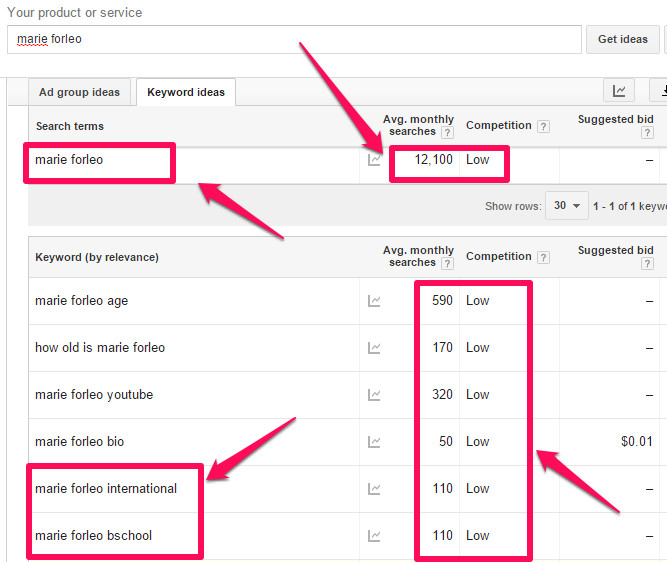




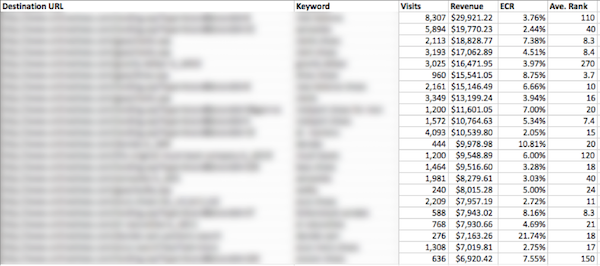
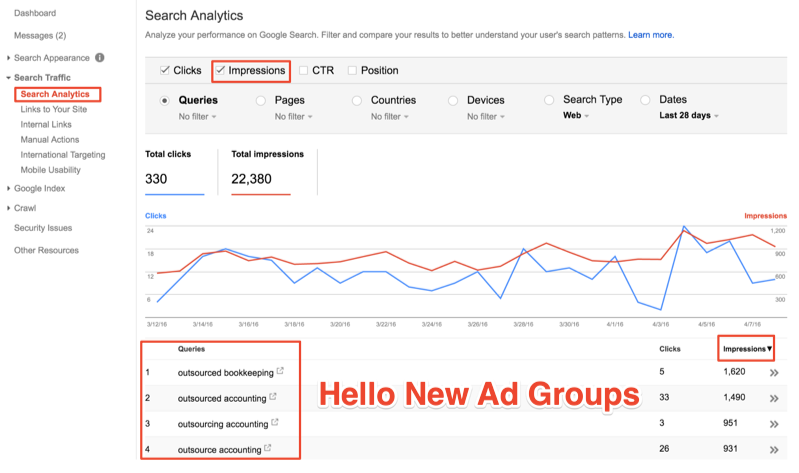







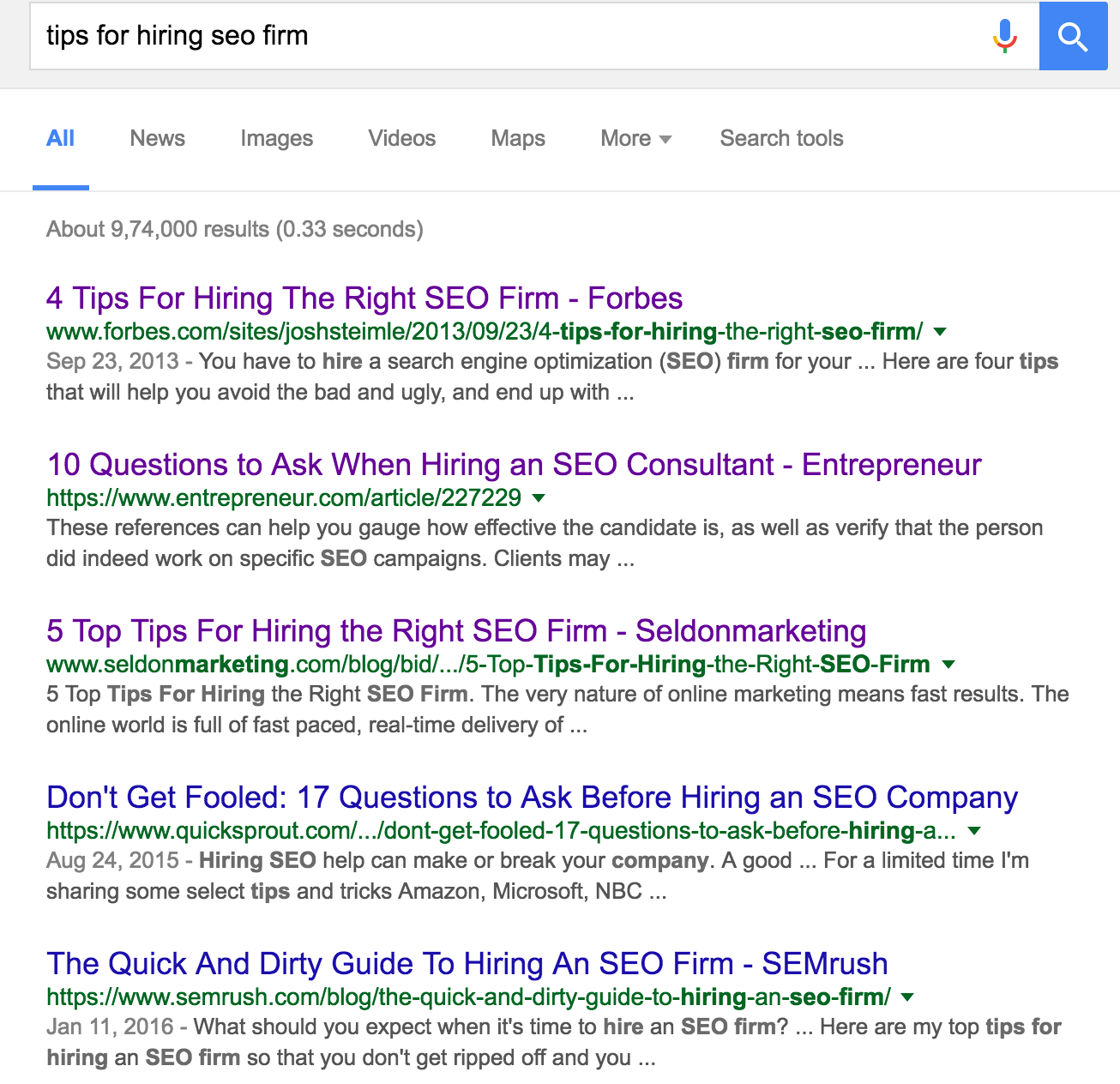



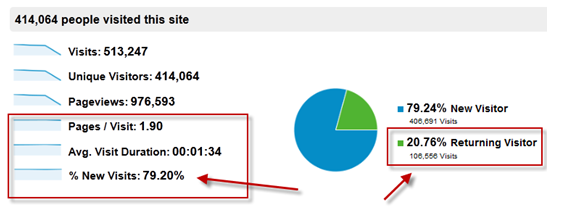


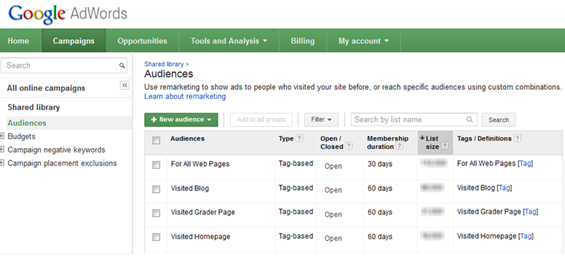
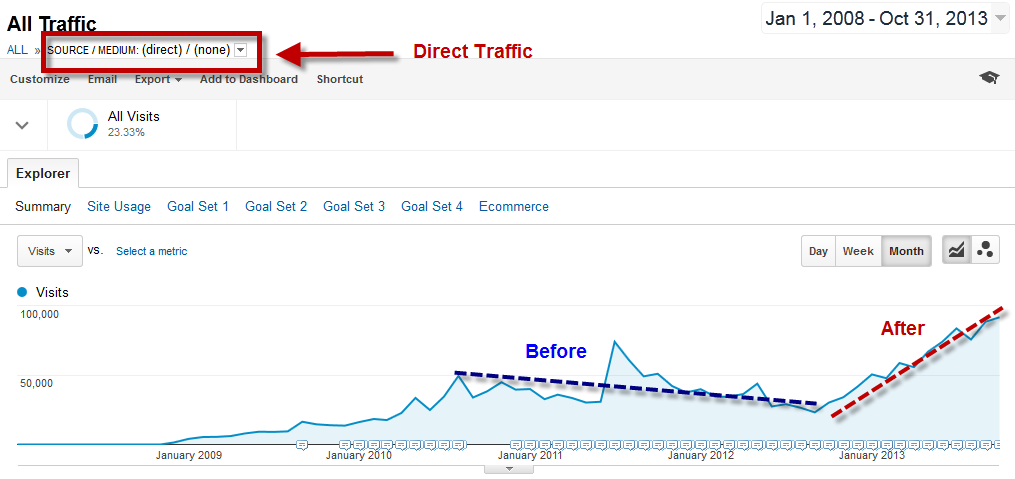
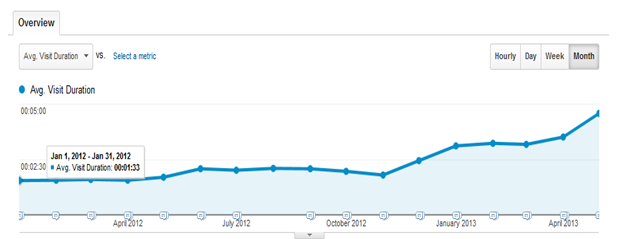
Comments (39)